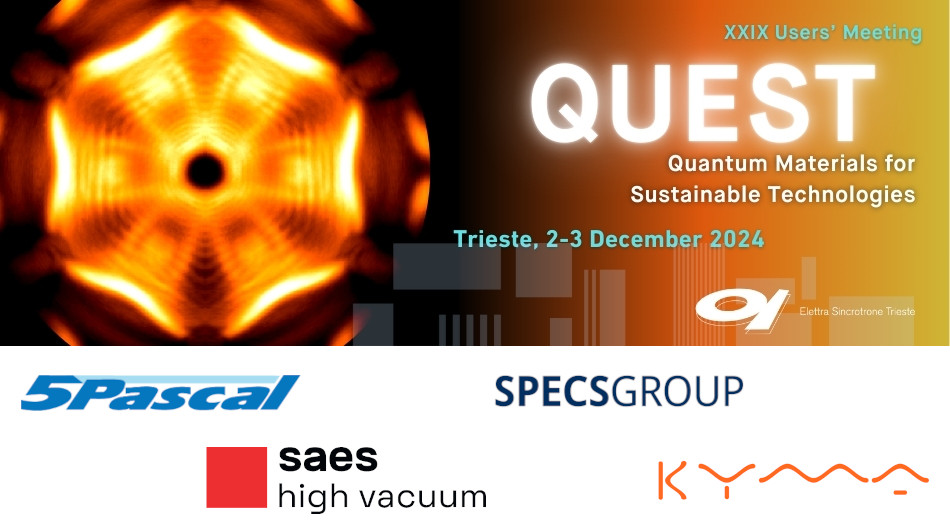Speaker
Description
Bi2Se3 belongs to a class of compounds known as tetradymites, is a well-known thermoelectric material that has also come into focus in recent years for its topological insulating properties. A three dimensional (3D) topological insulator (TI) is a material that is an insulator in the bulk and has metallic conductivity at the surface. The surface conductivity of TI arises from spin-orbit interactions. Electronic states called topological surface states (TSSs) occur on the surface of TI, and exhibit linear dependence of energy on momentum [1]. TSSs are spin polarized and their backscattering from non-magnetic defects/impurities is prevented. The addition of magnetic impurities on the surface of TIs, should have an effect on TSSs, i.e., an opening of an energy gap. These properties make TIs attractive for a variety of nano electronic applications such as spin-transfer torque non-volatile memories and field-effect transistors [2], but also in the field of optoelectronics for helicity-dependent photocurrents and catalysis. Presently, material scientists are working on the synthesis and characterization of new TIs and revisiting previously known compounds from the topological insulating prospective. This is the general context of the studies reported here, where Bi2Se3 is the starting material.
For the quasi binary system Bi2Se3-Bi2S3, some publications have suggested that Bi2Se2S in its stoichiometric form should be a stable TI [3], but the few available experimental results are not yet conclusive on this issue [4,5]. We investigated the topological insulating nature of Bi2Se3-Bi2S3 quasi binary system for a S content in the range 0≤y≤0.66. We prepared single crystals of Bi2Se3-ySy by the Bridgman method, study their electronic properties by means of angle-resolved photoemission spectroscopy (ARPES) and the spin-polarized ARPES. We demonstrated that the Bi2Se3-ySy solid solution supports spin-polarized TSSs for S content in the range 0≤y≤0.66 [6].
The interest in the quasi-binary Bi2Se3-Cr2Se3 system stems from the search for conditions for the synthesis of Cr-doped Bi2Se3 bulk single crystals as an alternative to Cr-doped Bi2Se3 thin films [8–10]. The preparation of Cr doped Bi2Se3 single crystals was reported to be challenging due to the presence of secondary phase precipitates [7], while the growth of Cr doped Bi2Se3 thin films by molecular beam epitaxy has been reported, and the opening of the gap has been observed [8–10]. Starting from a supersaturated melt, through a process of crystallization and phase separation, we showed that is possible to prepare Bi2Se3 single-crystal with Cr dopant at a concentration exactly corresponding to the solubility limit without introducing secondary phases, allowing accurate measurement of ARPES maps and the observation of an apparent energy gap similarly to the case of Bi2Se3 thin films [11].
References
[1] C. L. Kane and E. J. Mele, Phys. Rev. Lett. 2005, 95, 226801.
[2] W. Tian, W. Yu, J. Shi, and Y. Wang, Materials (Basel). 2017, 10, 814.
[3] H. Lin, T. Das, L. A. Wray, S. Y. Xu, M. Z. Hasan, and A. Bansil, New J. Phys. 2011, 13, 095005.
[4] R. Singh, V. K. Gangwar, D. D. Daga et al., Appl. Phys. Lett. 2018, 112, 102401.
[5] M. Neupane, S. Y. Xu, L. A. Wray, A. Petersen, Phys. Rev. B, 2012, 85, 235406.
[6] Z. R. Benher, S. Gardonio, M. Fanetti, P. Moras, A. K. Kundu, C. Bigi, and M. Valant, J. Mater. Chem. C, 2021, 9, 3058.
[7] P. Cermak, P. Ruleova, V. Holy, J. Prokleska, V. Kucek, K. Palka, L. Benes, and C. Drasar, J. Solid State Chem., 2018, 258, 768.
[8] T. Yilmaz, W. Hines, F. C. Sun, I. Pletikosić, J. Budnick, T. Valla, and B. Sinkovic, Appl. Surf. Sci., 2017, 407, 371.
[9] T. Yilmaz, G. D. Gu, E. Vescovo, K. Kaznatcheev et al., Phys. Rev. Mater., 2020, 4, 024201.
[10] X. F. Kou, W. J. Jiang, M. R. Lang, F. X. Xiu et al., J. Appl. Phys., 2012, 112, 063912.
[11] S.Gardonio, Z.R. Benher, et al. J. Mater. Chem. C , 2024, 12, 13236-13241.

